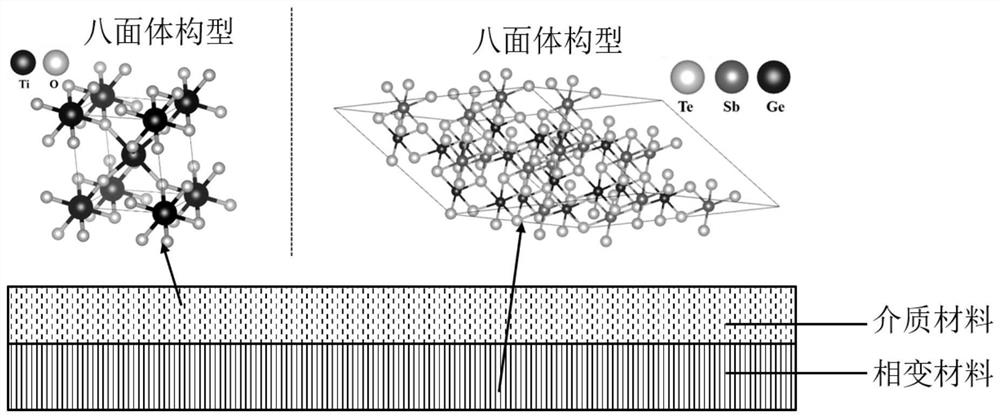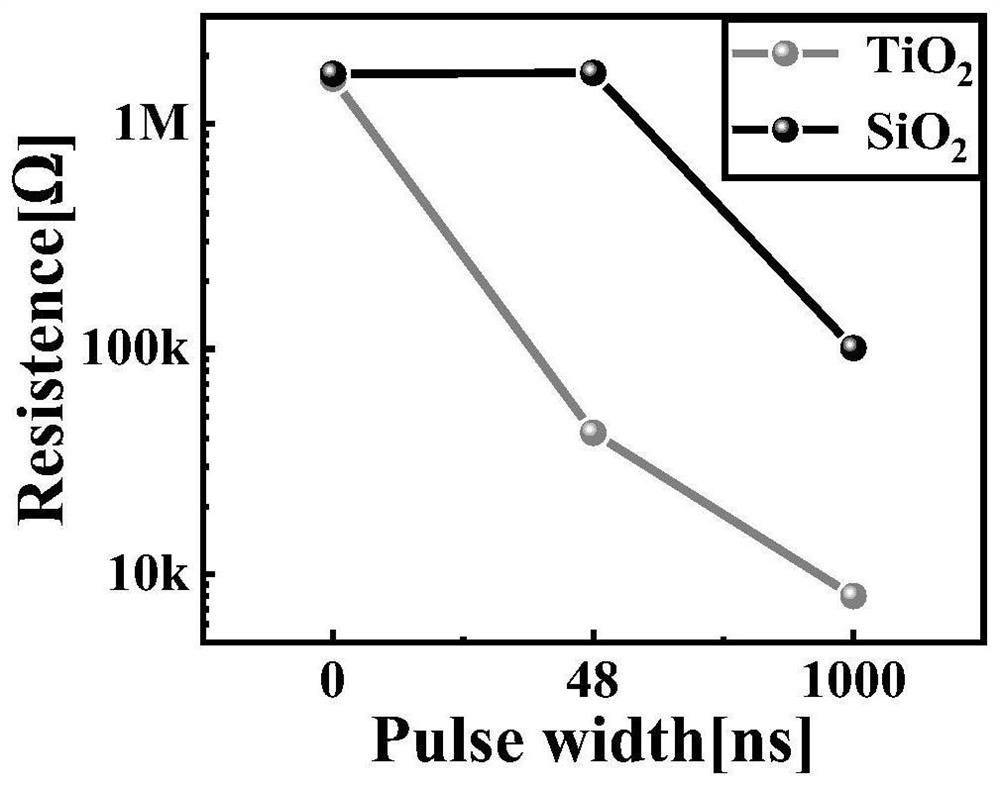Method for inducing crystallization of chalcogenide phase change material and application thereof
A technology of phase change materials and chalcogenides, applied in the field of microelectronics, can solve problems such as poor stability, incompatibility of semiconductor processes, and speed up the crystallization speed of phase change materials, so as to achieve the effect of increasing the crystallization speed
- Summary
- Abstract
- Description
- Claims
- Application Information
AI Technical Summary
Problems solved by technology
Method used
Image
Examples
Embodiment 1
[0024] A method for inducing the crystallization of a chalcogenide phase change material, wherein the dielectric material is in contact with the interface of the chalcogenide phase change material, wherein the structure of the dielectric material is an octahedral configuration, and the dielectric material is a chalcogenide at the interface where the two contact The crystallization of phase change materials provides crystal nucleus growth centers to induce accelerated crystallization of phase change materials.
[0025] At present, most of the crystallization of phase change materials is mainly induced by adjusting the ratio or composition of the material, or doping the material, such as using Sc doping to increase the number of initial four-membered rings in the phase change material, thereby increasing the phase change. However, this method has a series of problems such as poor thermal stability, easy oxidation, immature materials and incompatibility with today's semiconductor ...
Embodiment 2
[0032] A phase-change memory unit, in the memory unit device, among all the dielectric material layers in contact with the chalcogenide phase-change material layer, the dielectric material structure of at least one side of the dielectric material layer is an octahedral configuration; During the crystallization process of the material, the dielectric material provides a crystal nucleus growth center for the crystallization of the chalcogenide phase change material at the contact interface between the two, and accelerates the crystallization process of the phase change material.
[0033]In the existing memory cell structure, there is a dielectric material in contact with the phase change material, that is, the interface between the dielectric material and the phase change material itself exists. Considering that the crystallization speed of the phase change material and the required applied voltage are phase change functions The core indicators of the layer determine a series of ...
Embodiment 3
[0040] A method for preparing a phase-change memory unit as described in Embodiment 2. During the preparation process, a dielectric material with an octahedral structure is selected as the medium material layer in all dielectric material layers in contact with the chalcogenide phase-change material layer. At least one layer of material.
[0041] Specific examples are given below:
[0042] Such as image 3 The structure of a lateral nanostructure phase-change memory unit shown, the manufacturing steps are:
[0043] Step 1: Carry out photolithography on a silicon substrate (i.e. semiconductor substrate 100) whose crystal orientation is and has a lower dielectric material layer 101 on the surface. The material of the lower dielectric material layer 101 is titanium oxide material, and then A layer of electrode layer 102 is deposited on the engraved substrate by magnetron sputtering coating method, and after stripping, two symmetrical left and right electrodes are obtained. The ...
PUM
| Property | Measurement | Unit |
|---|---|---|
| Thickness | aaaaa | aaaaa |
| Thickness | aaaaa | aaaaa |
| Thickness | aaaaa | aaaaa |
Abstract
Description
Claims
Application Information
 Login to View More
Login to View More - Generate Ideas
- Intellectual Property
- Life Sciences
- Materials
- Tech Scout
- Unparalleled Data Quality
- Higher Quality Content
- 60% Fewer Hallucinations
Browse by: Latest US Patents, China's latest patents, Technical Efficacy Thesaurus, Application Domain, Technology Topic, Popular Technical Reports.
© 2025 PatSnap. All rights reserved.Legal|Privacy policy|Modern Slavery Act Transparency Statement|Sitemap|About US| Contact US: help@patsnap.com



